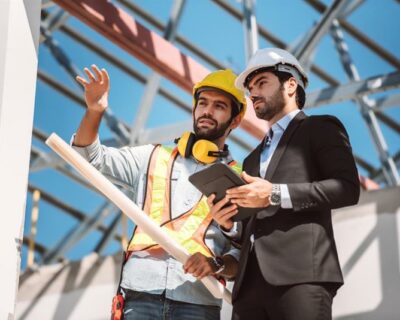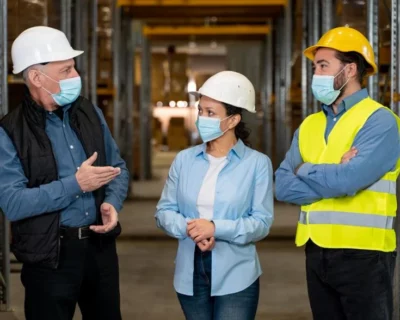
Is Workplace Fashion Important in Safety? Of Course!
We usually don’t associate safety with workplace fashion. For a long time, personal protective equipment has been designed for a single purpose – keeping us safe at work, no matter if it looks ugly or bulky. However, the clothes we wear influence our feelings and actions, and this also applies to PPE. Workers will most likely feel more comfortable with safety gear looks good on them, and this is especially true among the younger generations entering the labor market.
Clients will notice that your workers are well equipped for the job, and they will leave a good impression on their first visit to a new project site. Protective equipment that looks good also helps your workers feel more confident while accomplishing its basic function – keeping them safe.
When workers want to wear the PPE provided to them, implementing an effective safety program is easier. Just keep in mind that a “one-size-fits-all” approach doesn’t apply for safety gear – your company must have suitable equipment for all the sites and environmental conditions your workers may encounter.
Safety Gear That Fits Well: Better Protection and Better Appearance
Using PPE that fits properly is not only about workplace fashion – it will also protect your workers more effectively. For example, you’re more likely to trip when wearing safety shoes that are too big, and a loose vest is more likely to get stuck in moving machinery.
The concept of “dressing for the season” also applies to workplaces. During winter, safety gear with proper insulation will protect your workers from hypothermia and frostbite. Adequate insulation is especially important for cold-sensitive body parts like the hands and feet. The opposite applies during summer when you will want breathable clothes to prevent heatstroke and severe exhaustion.
Companies must also be aware that workplaces are becoming more diverse. Historically, the workforce in technical professions has been largely composed of men, and most safety gear is designed for their anatomy. This is no longer true in the modern business world, and companies must also provide adequate safety gear for women – this is especially important for PPE must fit properly to accomplish its function.
Stylish PPE for Industrial Sites
Protective gear can look good without being less effective – as mentioned above, PPE that fits properly is also safer to use. There is a common misconception that safety equipment can only have one possible design and that aesthetic modifications are not allowed. However, you will find that many equipment styles and designs are compliant with OSHA.
When dealing with a younger workforce, stylish PPE can help you create a safety culture. In the age of social media, personal appearance has become more important – even when working at industrial sites. Workers who are new to their field have less experience dealing with hazards, and they may not recognize the full importance of safety gear. They are more likely to avoid PPE that makes them feel uncomfortable – physically or mentally.
Combining Good-Looking Safety Gear with Technology
Wearable technology is an emerging workplace fashion trend in the safety industry, and PPE is becoming smarter. This reflects how safety has become a business priority, and potentially a competitive advantage for companies who take the lead. For decades, safety was regarded as an unavoidable requirement for doing business, and in some cases as an obstacle.

Modern safety gear not only looks better – but it can also collect valuable data from the workplace in real-time. For example, smart PPE can detect the warning signs of conditions like heat stroke and hypothermia, and alert both the affected workers and their supervisors.
According to a 2020 report from Technavio, a global technology research firm, the smart PPE market could grow by $2.25 billion by 2024. Wearable tech is growing in popularity, especially among large companies, and the following are some examples:
Wearable Tech: Protective gear can be enhanced by adding sensors that monitor vital signs in real-time. For example, heart rate can be monitored with a watch, and hard hats can be equipped with shock and impact sensors. Workplace safety can also be improved with augmented reality systems, which can be as simple as safety glasses with a heads-up display.
Smart Materials: Not all technology involves digital equipment, and smart materials also have promising applications in the safety industry. The potential applications include lighter and breathable fabrics that prevent heat exhaustion and safety gear that is more resistant to hazardous chemicals.
Enhanced Safety Glasses: These glasses offer improved protection against glare and hazardous chemicals, thanks to innovations in materials technology. They protect the eyes more effectively while minimizing visual fatigue.
Closing the Show
When dealing with safety, workplace fashion is probably one of the last things that come to mind. However, safety gear that fits well provides better protection, and workers will be motivated to wear equipment that looks good – especially younger ones. What we wear affects how we feel and think, and also our actions and decisions. Discomfort can cause accidents in a hazardous workplace – this includes the mental discomfort caused by PPE that doesn’t look good on you.
Safety gear is also becoming more integrated with technology, which is another appealing feature for younger generations. The combination of good-looking PPE designs wearable tech can help your company create a safer workplace.






























